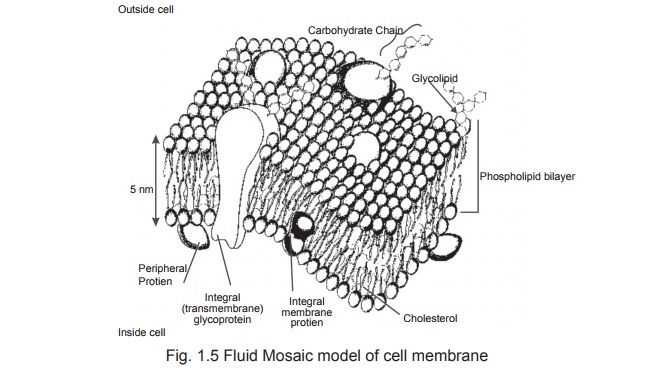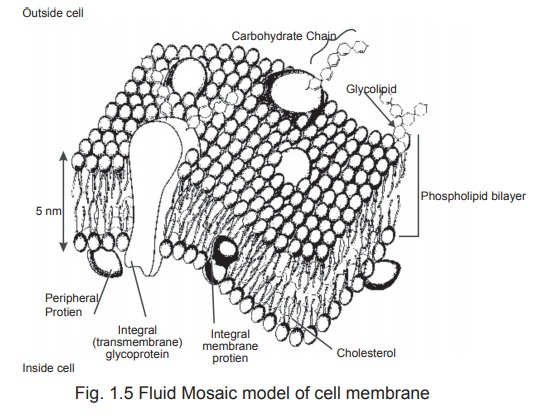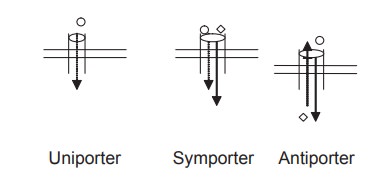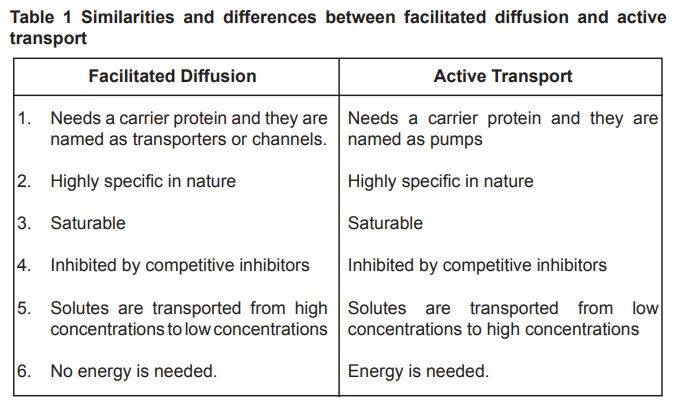Chapter: Biochemistry: Cell Membrane
Membrane Transport

Membrane Transport
One of the vital functions of the plasma
membrane is membrane transport. Such a transport is important to carry out the
life processes of the cell. Hydrophobic molecules and small polar molecules
rapidly diffuse in the membrane. Uncharged large polar molecules and charged
molecules do not diffuse and they need proteins to get transported.

Depending upon the energy required and movement
of the solute for or against the concentration gradient, the transport can be
classified into two, active transport and passive transport.
1. Passive transport
Passive transport is also called as passive
diffusion. In passive transport, the substances move from higher concentrations
to lower concentrations generally without the help of any protein. The
transport continues until the concentration of the substance becomes same on
both the sides of the membrane. O2, CO2 and urea can
easily diffuse across the membrane.
2. Facilitated Diffusion
Eventhough, the concentration of certain
hydrophilic substances like glucose are high across the membrane, they cannot
pass through the membrane and need a carrier for their transport. Such a
transport is called as facilitated diffusion. The proteins involved in such
processes are called as carrier proteins. Carrier proteins are present in all
biological membranes. Some important characteristics of carrier proteins are
·
They
facilitate transport from high concentrations of the solute to low
concentrations.
·
They
speed up the process of attaining equilibrium
·
They
do not need energy for their transport.
·
They
are highly specific in nature.
Some common examples are glucose transporter and
anion transporters in red blood cell membranes.
Carrier proteins are classified into three major
types.
·
Uniporters
that transport single solute from one side of the membrane to the other.
·
Symporters
that transport two different solute molecules simultaneously in the same
direction.
·
Antiporters
that transport two different solute molecules in opposite directions.

3. Active transport
Cells have to transport substances against the
concentration gradient, i.e. from low concentrations to high concentrations.
This transport called active transport is a thermodynamically unfavourable
reaction. Hence, it needs energy to drive the reaction which is acquired by ATP
hydrolysis. Active transport is also mediated by carrier proteins and they are
called as pumps. Na+ K+ ATPases that is required to maintain the potassium
concentration high inside the cell and sodium concentrations low is an example
for pumps.
4. Endocytosis
Endocytosis is the active process of engulfing
large size particles of food substances or foreign substances. Depending upon
the nature of the material that is ingested, endocytosis may be classified into
two. Pinocytosis, in which the fluid material is engulfed and phagocytosis, in
which large sized solid material is engulfed.
During the process, the plasma membrane
invaginates into tiny pockets, which draw fluids from the surroundings into the
cell. Finally, these pockets pinch off and are known as pinosomes or
phagosomes, which fuse with lysosomes and liberate their contents into the cell
cytosol.
Exocytosis is the process of exudating the
secretory products from the cells. Vesicles containing secretory materials fuse
with the plasma membrane and discharge their contents into the exterior.
Pancreatic cells pass out their enzyme secretions to the exterior by
exocytosis.
Table 1 Similarities and differences between facilitated diffusion and active transport

Facilitated Diffusion
1.Needs a carrier protein and they are named as
transporters or channels
2. Highly specific in nature
3. Saturable
4. Inhibited by competitive inhibitors
5. Solutes are transported from high
concentrations to low concentrations
6. No energy is needed.
Active Transport
1. Needs a carrier protein and they are named as
pumps
2. Highly specific in nature
3. Saturable
4. Inhibited by competitive inhibitors
5. Solutes are transported from low
concentrations to high concentrations
6. Energy is needed.
Related Topics